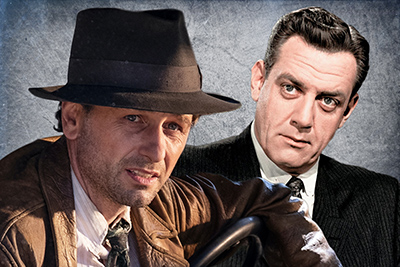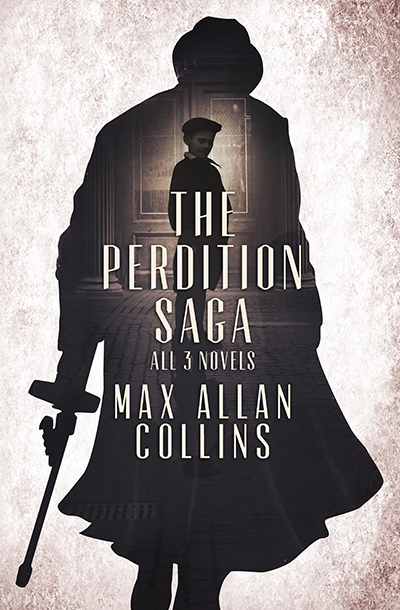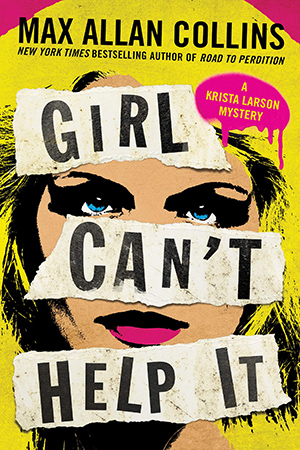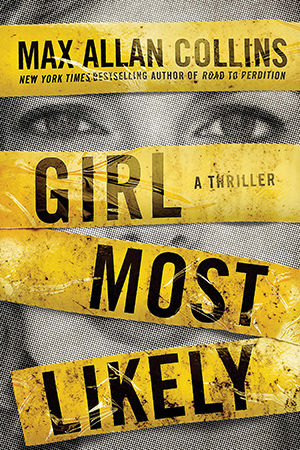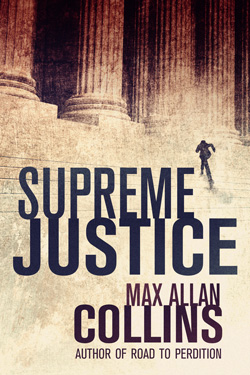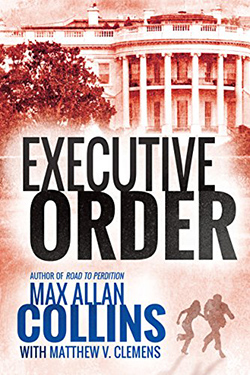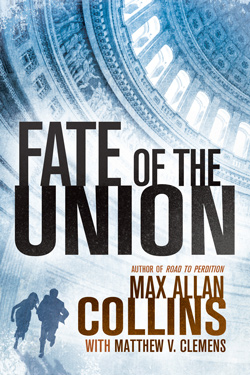The Thomas & Mercer has eight of my titles as part of its Mystery, Thriller & Suspense Kindle book deals starting 7/1/2020 and running through 7/31/2020. These e-books are only 99 cents USD during the promotion period:
The Lusitania Murders
The Pearl Harbor Murders
The Titanic Murders
The Hindenburg Murders
The London Blitz Murders
The War of the Worlds Murder
Midnight Haul
What Doesn’t Kill Her
My pal, writer Paul Bishop – a remarkable guy and the Renaissance man some people claim me to be – has a great podcast called Six-Gun Justice. As an adjunct, he interviews writers, and he did one with me. For the few of you who may not be sick of hearing my voice yet, here’s your chance to do so. Seriously, Paul did a great job with his questions and his editing. My interview and several others can be accessed here. [Note: The M.A.C. Interview podcast is dated 6/17/2020.]
Also, here is a great review of the soon-to-be-published Eliot Ness & the Mad Butcher by A. Brad Schwartz and me, from Library Journal:
Collins and Schwartz (
Scarface and the Untouchable) reunite to continue the story of law enforcement agent Eliot Ness, known for leading the Untouchables, the group famous for bringing down Al Capone. Ness moved on to serve as Cleveland’s public safety director during a tumultuous time in the city’s history following the Great Depression. He confronted various crime and political challenges, which are detailed within the book. The story is anchored by Ness’s efforts to identify the Mad Butcher, a serial killer who terrorized Cleveland and whose actions followed Ness until the end of his career. The book is thoroughly researched and well paced, a feat considering the breadth of Ness’s work.VERDICT: A successful blend of history and suspense, this volume will appeal to readers interested in true crime and law enforcement.
Reviewed by Kate Bellody
Because I am wrapping up a novel that I haven’t told you about, because it is frankly under wraps until the publisher gives me the go-ahead to talk about it in public, the update this week is chiefly an article about me that ran a few days ago (as I write this).
I will be back sharing more of my thoughts than I should next week.
This is probably the most in-depth article ever written about me and my work. It was put together from various sources and interviews with me by Sean Leary, a successful (and terrific) writer of regional bestsellers in the Quad Cities. This appeared over the weekend at QuadCities.com as part of their regular Saturday in the Arts feature.
A few inaccuracies are included, due to my sloppiness being interviewed, and I am correcting those parenthetically in boldface. [From Nate: The article on QuadCities.com includes a nice selection of pictures, so I recommend checking out the article there as well.]
Max Allan Collins’ success is no mystery.
The man in black has proven to be a maestro at making people’s lives full of stress, misery and murder — and people love him for it.
It helps that the people are fictional, characters in the canon of the Muscatine-based author, who, this month, was nominated for a Scribe Award for his 2019 novel, Murder, My Love. The awards winners will be announced July 15.
It’s only the latest honor for the longtime penman, who saw his novel Road To Perdition turned into an Oscar-nominated film, his novel series Quarry made into a series on Cinemax, his band Crusin enter the Iowa Rock And Roll Hall Of Fame in 2018, and who was given the 2017 Grand Master Award for lifetime achievement as a fictional murderer, a maestro of mystery novels, for over four decades.
MWA’s Grand Master Award represents the pinnacle of achievement in mystery writing and was established to acknowledge important contributions to this genre, as well as for a body of work that is both significant and of consistent high quality. Collins certainly fits both categories.
“The Mystery Writers of America is the primary professional group of mystery and suspense writers, and getting its lifetime achievement award, the Grand Master ‘Edgar,’ is about as good as it gets,” Collins said. “The list of Grand Masters includes many of my personal favorites, Mickey Spillane, Rex Stout, Agatha Christie, Alfred Hitchcock, and Erle Stanley Gardner, among many others. It’s a thrill to be in their presence. The award comes at a time when I’ve battled my way back from some nasty health issues, so it feels like really, really, good medicine. And, yes, it’s something I’ve dreamed of receiving, though didn’t know if I ever would.”
But how does it feel to be at that point in his career when he’s received a lifetime achievement award?
“It’s a mixed bag,” Collins said. “I’ve received several others, notably the Eye from the Private Eye Writers of America, and it’s nice to see your body of work recognized, but sobering knowing that nobody gets this kind of honor until their third act.”
His first two acts have been pretty impressive, and his debut was at a young age.
“I decided to be a writer in junior high and began submitting novels soon after,” Collins said. “I went to the University of Iowa Writers Workshop and sold two novels while I was there, Bait Money and Blood Money. (Blood Money came later – No Cure for Death was the other book I sold while at the Workshop.) I never looked back. I taught briefly, part-time, at Muscatine Community College, but I’ve never had a fulltime job except freelance writing. That was made possible in part because I landed the Dick Tracy strip, which gave me a nice income for fifteen years, by which time my novel-writing career was established. I stayed afloat by not being afraid to try different kinds of storytelling. I’ve done comic books, comic strips, novels, short stories, non-fiction books, trading cards, movie scripts, TV scripts, jigsaw puzzles and video games. I took on a lot of movie and TV novels, and put my name on them when others said I should hide behind a pseudonym. I felt using my own byline kept me honest, and it built an audience because many of my media projects were high-profile, movies like Saving Private Ryan and American Gangster, and TV properties like CSI and Criminal Minds—Matt (Clemens) worked on the latter two with me. I am proud to be a professional writer.”
Getting His Start With A Four-Color Fan Favorite
To many fans, Collins’ name is synonymous with a two-fisted, four-color counterpart — which is celebrating the 30th anniversary of its celluloid incarnation this year. Although his resume includes such hard-boiled characters as Mike Danger and Ms. Tree, to comics aficionados, he’s best known for his run as writer of the Dick Tracy newspaper strip from 1977 to 1993. Collins would go on to pen the novel for the film version of Tracy, and that novel would end up being the driving force for the screenplay for the Oscar-nominated film starring Warren Beatty in 1990. (The incredible story of that can be found on Collins’ blog.) The job was the realization of a childhood dream.
“It sounds corny, but it really did all begin for me with Dick Tracy, because I started reading that when I was a little kid — 7, 8 years old,” he says. “Most kids read Dick Tracyand wanted to be Dick Tracy when they grew up. But I read it, and I saw this signature on the strips, Chester Gould, and I was just fascinated by it, by the idea of someone writing it. I thought there was very little chance I could grow up and be Dick Tracy, but I could be Chester Gould. And by God, I was for about 15 years.
“The whole fascination with crime fiction really does go back to my childhood. Dick Tracy, The Untouchables TV show … those were things that I loved. That was partly because my father would tell me about stories in the paper about John Dillinger when he was a kid. He would talk about how he and his family would go out and see crime scenes afterwards. So at a very early age, I got this picture that behind this noir genre, there were real events and real characters, and that very much appealed to me.”
Sharing his work with friends was also a spur to his development.
“Just to get that encouragement, to have my friends say, `Oh, you wrote this? This is really cool,’ was a big deal for me and helped me to keep going,” Collins says. “The other thing that was important was having encouraging teachers. I had several good teachers throughout growing up that nurtured and encouraged me, and I was fortunate to have them helping me along.
“Talent is a relatively small part of it. It’s really enthusiasm and having those flames fanned by people in that educational support system. A good teacher can have such an impact on a young mind.”
After graduating from the University of Iowa with a degree in creative writing, Collins taught at Muscatine Community College and spent almost three years sending out manuscripts in hope of landing his first book deal. (This is a little wrong – I sent the novels out while I was at the Workshop starting in ‘68. I sold them right about the time I started teaching at MCC in 1972.)
“I was very discouraged,” he says. “I remember I had a manuscript come back around ’72, and it was really discouraging, and I thought, `Maybe this isn’t for me; maybe I’m not going to make it. And then, sometimes God decides to act like O. Henry. I got on Christmas Eve 1972 the letter saying that my first book, Bait Money, had been sold. And a year later it came out in time for Christmas the next year, and I’ve been going ever since.”
A Renaissance Man
In the ensuing four-plus decades, Collins has proven to be a Renaissance man of the genre. He’s tackled everything from comics to films to documentaries to novelizations of films and TV shows. He’s also been a regular on local music stages with his band Crusin, which was inaugurated into the Iowa Rock And Roll Hall Of Fame two years back.
All told, he’s placed over 100 novels on bookshelves — many featuring his most famous character, Nate Heller. His locally produced independent films, including the cable hits Mommy and Mommy’s Day were released as a DVD set called The Black Box. (And now are on Blu-ray.) To top that off, he also has several other writing projects on his plate and is busy knocking out novels with his wife, Barbara, and his other co-writer Matthew Clemens.
Asked about the constant movement, Collins chats breezily about his diverse interests and passions. His gesticulations and the rising timbre of his voice spark the image of him as a junior-high kid, bursting to share his action-jammed tales with his friends. However, his work ethic also seems driven by the memory of his early career struggles. Talking about them, his demeanor slumps.
“Even today, I think one of the hardest things about this profession is how long publishers sit on books,” he says. “It’s so crushing to go to that mailbox and wait to see that manuscript sticking out with that rejection letter.”
Collins hasn’t gotten many of those lately. (Actually, I have.)
Looking back on his career, of what is he most proud?
“Probably just having a career — being able to make a living at fiction writing without a day job, which I’ve been doing since 1977,” he said. “Career highs include landing the writing of the Dick Tracy strip back in ’77; winning the PWA Shamus Best Novel, True Detective, in 1984; directing and writing five independent features, with Mommy airing on Lifetime; and having my graphic novel, Road to Perdition made into an Academy Award-winning film with Tom Hanks. I’m also proud of what my wife (Barbara Collins) and I have achieved with our humorous ‘Antiques’ mystery series.”
The road to Road to Perdition
Undeniably, Collins’ most well-known achievement to the general public has been Road To Perdition, the graphic novel which led to an Oscar-winning film starring Tom Hanks, Paul Newman, Jude Law and various other heavy hitters.
“As I’ve gone down the suspense and mystery path, it has fascinated me to see how history feeds into the popular culture,” Collins says as he begins to talk about his most famous achievement. “The fact that there was a real Al Capone and an Eliot Ness and a John Looney, and that their traits ended up influencing these fictional characters like Dick Tracy or Vito Corleone, is very interesting to me.”
In 1998, Collins’ graphic novel Road to Perdition, based in part on Quad-Cities gangland history, smashed out of the gates to become a best seller. It almost immediately drew interest from Hollywood, and in 2002, it hit screens nationwide as a critically acclaimed — eventually Oscar-nominated — film starring Tom Hanks and Paul Newman.
The national notice also brought the Muscatine author a large dose of recognition on the local scene. One book-signing session at Borders in Davenport featured a line of fans snaking out the door and into the parking lot. “It was very rewarding,” Collins says, quietly.
Perdition generated a prequel, Road to Perdition 2, as well as two sequels, Road to Purgatory and Road to Paradise, the last of which was released in December 2005. (The three can be found as a trilogy for sale on Amazon Kindle now.)
Ironically, the origin of the story of hit man Michael Sullivan and his son, Michael Jr., lies in part in the bonding between Collins and his son, Nate, over their mutual love of the Japanese comics series Lone Wolf and Cub. The tale of a renegade samurai’s vengeance-stained travels with his infant boy provided the template for Perdition.
“I loved the image of this warrior with a baby carriage,” Collins says. “That combination of tender and tough has always fascinated me.”
Collins’ research for another novel, 1983’s True Detective, helped provide the characters and setting for the epic.
“I came across this guy, John Looney, who had been a gangster in the Quad-Cities in the ’30s. I couldn’t use him at the time, but I kept him on my shelf. So when it came time later that I wanted to pursue that idea of the Godfather-style executioner in the mode of Lone Wolf and Cub, I remembered that character of Looney. I thought it would be really cool to center the story around this local gangster. So I merged the two ideas, and that’s how Road to Perdition was born.”
(Looney operated in the teens and twenties – I couldn’t use the material in True Detective because it took place in the early thirties, although he is mentioned. When I did Road to Perdition as a graphic novel, I took the liberty of moving Looney up a decade or so, to take advantage of the Capone and Nitti era about which I wrote in the Heller novels – Looney had been aligned with the Chicago Outfit but under Johnny Torrio’s reign.)
Although at this point, the story has reached a satisfactory end, Collins hasn’t ruled out the possibility of revisiting the characters. “If you talk to most writers, they’re not inclined to sequels,” he says. “But I grew up reading serials, so I guess I always thought if I liked these characters and I think there’s something left to be said, I’ll want to write more about them.”
Following His Quarry, Continuing His Legacy
Speaking of series, Collins’ series Quarry, one of the first novel series to feature a hit man as its central character, was developed into a series by Cinemax that aired for one season in 2016, and continues to enjoy success as a literary endeavor. Collins has also continued his series of mystery novels with his wife, Barbara, his Nathan Heller series, the Reeder and Rogers suspense novel series he co-writes with Matthew Clemens, and more.
He’s also an active figure on the area writing festival scene, often giving classes and seminars for aspiring writers.
(I am semi-retired at this kind of thing – very rare now, once quite a major part of what I did.)
What kind of advice would he give to aspiring mystery writers?
“It’s a steady learning process,” he said. “There are writing schools, and I attended the best at the Writers Workshop in Iowa City. And there are seminars, and I’ve taught my share. But writing is chiefly self-taught. It comes from reading analytically, learning to edit your own work, and staying at it. I don’t think I’ve ever made any quantum leaps in my writing, but I’ve gotten incrementally better all along the way. I’m much better now than I was when I first published…but I wasn’t bad then.”
What has he most enjoyed about the process?
“Oddly, collaboration has been one of my biggest joys,” Collins said. “I say `oddly’ because writing is largely solitary. But I loved making films, most of them with my terrific collaborator Phil Dingeldein, and the whole collaborative experience, from movie set through editing, was the best. I also enjoy collaborating with my wife Barb on the ‘Antiques’ novels — that’s special, being able to co-author works with your spouse and stay happily married. Matt Clemens and I also have collaborated on a score of books, and I’m collaborating posthumously with Mickey Spillane, completing his unfinished manuscripts. Making new Mike Hammer novels happen is a delight to the thirteen year-old me, who travels with me everywhere.”
Collins is hardly resting on his laurels, lifetime achievement-wise or otherwise. He’s got a number of deadly projects on his bullseye for the coming years, and his latest Caleb York western novel, Hot Lead, Cold Justice, was released just a few weeks ago, on May 26.
As Collins said of the new novel on his blog, “Unlike the other Spillane co-bylined books in the Mike Hammer series (and other crime novels), these westerns are mostly by me, working with characters and situations from Mickey’s various drafts of his screenplay, The Saga of Calli York, written for John Wayne but never produced. I have endeavored in these novels – I just completed another – to bring either a strong mystery or crime novel element into the proceedings. Even if you don’t usually read westerns, I think you will have a good time – assuming you are reading my other work, in particular the Spillane material.”
No matter what your literary interests, you’re sure to have a killer time reading any of Collins’ books.
The author of this piece:
Sean Leary
Sean Leary is an author, director, artist, musician, producer and entrepreneur who has been writing professionally since debuting at age 11 in the pages of the Comics Buyers Guide. An honors graduate of the University of Southern California masters program, he has written over 50 books including the best-sellers The Arimathean, Every Number is Lucky to Someone and We Are All Characters.









